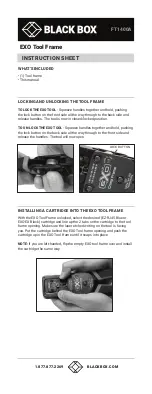
Oxford Instruments STM32F103C8T6 Assembly Instructions
Tools required
•
A temperature-controlled soldering iron with a fine chisel or bevelled conical tip, such as the
TS100
•
A method of cleaning the tip of the soldering iron such as brass wool or a damp sponge
•
A pair of fine tip metal tweezers
•
A small stiff bristled brush such as a tooth brush
•
A stand mounted magnifying glass or microscope (optional)
•
An ESD ground strap (optional, but recommended)
Consumables
•
Approx. 50cm of fine solder wire, 0.5mm works well. 60/40 tin lead solder will give the best
results, especially for a novice. The PCB and components are all lead free and ROHS
compliant. If lead free status is required, a ROHS solder with 5% silver content will yield
better results than standard 100% tin solder.
•
A synthetic (not rosin based) “no clean” tacky flux such as ChipQuik
SMD291. Cheaper
alternatives can be found by searching for “tacky flux” and looking for
a flux aimed at BGA
reflow/reball. Rosin based fluxes give off harmful fumes during soldering and should be
avoided unless working with good fume extraction.
•
De-soldering wick such as Chemtronics soder-wik or Edsyn soldasip
•
Acetone or isopropyl alcohol (IPA) for washing
•
Latex or nitrile gloves to be worn during wash operations
•
Double sided tape to mount the display
•
ChipQuik de-soldering alloy (optional, needed for rework in case of mistakes)
Step 1
–
The Processor
Start with the processor as it is the hardest component to get right. Several attempts may be
required to successfully solder the device, and other parts on the PCB may be damaged by the re-
work process.
Note that the processor is mildly static sensitive. It does have ESD protection diodes built into the
package on all its IO pins, however work should still be conducted wearing an ESD ground strap.
Set the soldering iron for an appropriate temperature for the solder in use. For tin/lead solder, 330°C
is appropriate. For lead free solder, 370°C or higher is required. Thoroughly clean the tip of the
soldering iron by applying some solder and wiping it off, several times if needed. There should be a
shiny spot on the tip of the iron which readily accepts solder. It is important that the soldering iron
tip has a small flat which will hold a small puddle of solder in a controlled location. Conical tips are
not well suited to this task. Chisel tips or conical tips with a bevelled flat on the end are best.
Tin some solder onto 1 or two pins in one corner of the PCB footprint.


































